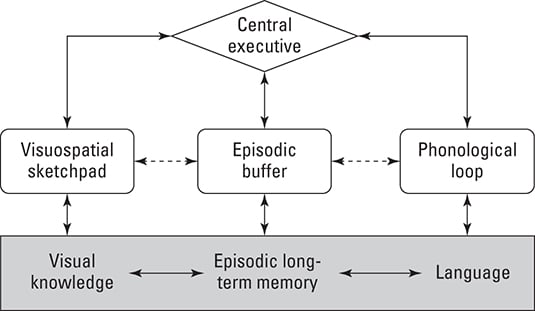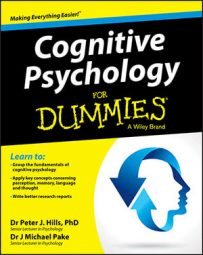Short-term memory is memory for things currently in mind. It’s the active state of memory in cognitive psychology, like the RAM on a computer. According to the working memory model of British psychologists Alan Baddeley and Graham Hitch, different types of short-term memory exist:
Phonological loop: The inner ear. This system comprises the phonological store, a short-term store for sounds, and an articulatory rehearsal mechanism, which is where sounds are repeated for a short time to keep them active in memory.
Visuospatial sketchpad: The inner eye. This system comprises the visual cache, a store for mental images, and an inner scribe, which is a mechanism that plans sequences of actions.
Episodic buffer: This system binds and integrates information into discrete pieces. The brain stores new discoveries and information by linking together how something looks with other sensory information and anything already known about it.
Central executive: Like a computer’s central processing unit. It directs the resources of the remaining parts of working memory. It focuses attention on a particular task, switches attention between tasks and divides attention between tasks.
 The working memory model of short-term memory.
The working memory model of short-term memory.

